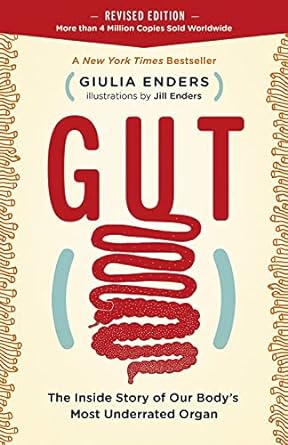We are honored to share our discussion with Dr. Kelly Blodgett, one of the world’s leading Biological Dentists, whose Portland, Oregon based practice – Blodgett Dental Care – is one of the most sought-after destinations for dental tourism. Dr. Blodgett is board certified in Naturopathic Medical Dentistry and Integrative Biological Dental Medicine. He is a wealth of information and is passionate about educating and empowering patients to understand the WHY behind their oral health issues.
Hi Dr. Blodgett! Thank you for taking the time to chat with us today! Let’s dive right in!
Q: Our patients at Inspired Health are familiar with Functional Medicine and its goal of uncovering the root cause of health issues. Biological/Holistic Dentistry works in a similar manner. Can you explain some of the main differences between biological and traditional dentistry for those that might be new to this topic?
KB: The beauty of the concepts of Functional Medicine and Biological Dentistry and Holistic Oral Health is that they are one and the same subjects. Optimal whole-body health cannot be experienced if oral health is poor and vice versa. They go hand in hand. That is why I am so excited that your wonderful team of healthcare professionals at Inspired Health is interested in bringing this connection to light!
The primary difference between traditional dental care and biologically based dentistry is that traditional dentistry focuses on treating symptoms. If a cavity develops, you drill and fill. If gums get inflamed, anti-biotic treatments are rendered. The question of WHY the cavity developed or the gums became inflamed is not the focus. Biological dentistry looks not only at how to resolve symptoms in a minimally invasive and biologically respectful fashion, but it also is a practice of seeing connections between the health systems of the body. Biological dentistry seeks to improve the state of health such that symptoms of disease don’t have an opportunity to start. This includes considering energetic meridian connections which are not covered in traditional dental education.
Q: It’s curious that we often forget about the health of our mouth/teeth/gums when we’re considering our overall health. There’s a reason why we ask about a patient’s dental history on our intake forms here at Inspired Health! We’re interested in the health of the WHOLE body. When it comes to oral health, what are some signs and symptoms that patients might not be aware of that could be affecting other systems in the body?
KB: I am so glad that you are bringing up these connections and issues! Every condition in the mouth (tooth decay, gum inflammation, crooked teeth) can reflect a person’s systemic state of health. We have been trained to think of teeth as some sort of inanimate objects. They are drilled and filled without a second thought. However, they are, in fact, living organs! Each tooth has its own blood supply, nerve innervation and lymphatic drainage. They reflect the health of the individual as do the quality of our skin, hair, tongue, breath, and blood.
Not only do teeth and the soft tissues of the mouth (i.e. – gums and oral mucosa) reflect the health of the body, but they directly impact it as well. For instance, when fillings are placed in teeth, the substances in those fillings mix into the foods we eat and are absorbed by the tongue as it comes in contact with their surfaces. This is particularly concerning when we consider that approximately half of the fillings placed in the back teeth of people’s mouths in America contain mercury, one of the most toxic substances on earth. Another substance known to be a neurotoxin but is being pushed on the public as “safe and healthy” is fluoride. Hundreds of studies have shown that chronic exposure to fluoride results in lowered IQ and contributes to neurodegenerative diseases.
Other common dental procedures such as root canals and tooth extractions can become chronic sources of toxicity. As microbes enter the body through dead teeth (root canals) and degenerative bone (poorly healed extraction sites, also known as “cavitation lesions”), these focal sources of infection become the cause of oxidative stress. Every tissue in the mouth is connected to every other tissue in your body. Understanding this helps to develop a deeper appreciation for why it is so important to be mindful of what you allow to pass through your lips!

Q: You teach extensively about the risks that root canals can pose to our health. Can you give us a brief “Root Canal 101” lesson?
KB: A “root canal” is a dental treatment where the soft tissues that live within a tooth (i.e. – the blood vessels and the nerves) are removed and replaced with a flexible filling cone called “gutta percha” and sealing paste. To better understand why root canals are a fatally flawed procedure, it requires a basic understanding of dental anatomy.
Each tooth is made up of 3 layers: enamel, dentin, and pulp. The enamel is the surface that most people think of when they think of teeth. It is the extremely hard outer coating on teeth that we see when people smile. It is highly mineralized and designed to last an entire lifetime for chewing purposes under healthy conditions. The dentin, which makes up the majority of tooth structure, is made up of mineralized collagen and full of millions of pores called “dentin tubules.” The third layer is the pulp which is comprised of the nerve and blood supply that innervate the tooth.
When the pulp is removed during a root canal, the pores (dentin tubules) of the tooth become open pathways through which microbes enter the newly embalmed tooth. When you think about it, a root canal treated tooth is a lot like a corpse that has been embalmed. It has had all vital tissues removed and has been filled with a material to maintain its appearance of being real. However, being dead and an open portal through which microbes enter the body, it is actually potentially very toxic. Given the hundreds of people I have successfully helped to regain their whole body health by removing their dead teeth, I am convinced that there is no such thing as a “healthy” root canal. Although I do believe that there are certain instances where root canal treatment may be the best option out of a group of bad options, I do not believe that they are the “cure-all” solution to painful teeth that most dentists tell their patients.
My advice to people who hear from their dentist, “You need a root canal,” is to ask more questions. Ask how long they should expect their dead tooth to be healthy. Ask to be informed of all other options and the pros and cons of each. If your dentist tells you that you “need” a root canal and offers no other options, you are not able to give informed consent. Until you understand ALL other possible options, you are not truly “informed.” So be your own health advocate and ask to be fully informed. The dentists worth seeing will be glad you asked!
Q: Many people are now familiar with the importance of the gut microbiome, but the oral microbiome doesn’t get as much attention. Could you talk a bit about this? Does one affect the other? What do we need to be aware of?
KB: The truth is that the oral microbiome and gut microbiome are one and the same. From the lips to the anus, the tube is continuous. Granted, there are different portions of the tube that serve different purposes, but everything starts in the mouth and it’s all connected! What we eat, drink, and absorb from substances we have placed in or on our teeth, all end up “downstream” in the stomach, small intestine, large intestine and colon. For those who would like to better understand the connections of the gastrointestinal tract and a simplified explanation of its microbiome, I recommend reading the book “Gut” by Dr. Giulia Enders.

Q: What are the most important preventative steps we can take to promote optimal oral health?
KB: This is a great question, particularly considering the many ways our mouths have been assaulted from “unnatural” sources over the past 150-200 years! We live in a time where there are so many artificial substances to which we are exposed. Artificial food, artificial light, artificial information and even artificial intelligence. Getting back to the basic things to which our human bodies were designed to be exposed has never been more important.
- Personally and professionally, my first recommendation is to disconnect from the digital realm, connect to the analog, and find what brings you peace. Our lives benefit greatly from increasing our parasympathetic tone and quieting the sympathetic overdrive. It is the “fight or flight” concept versus “rest and digest.” When our bodies experience a parasympathetic state, fluids from inside the teeth flow out through the dentin tubules. This helps to flush out the acids and microbes to which our teeth are invariably exposed. However, when we are eating on the go and not slowing down to intentionally digest our food, teeth can become more sensitive, more prone to erosion and our food is digested more poorly downstream in the G.I. tract. So slow down to enjoy your meals and keep your teeth in better health!
- Another recommendation regarding promoting optimal oral health is to develop a home care program that works for you. There are many ways to keep your teeth and gums in great health, not just one! If you don’t like flossing, try “oil pulling” with coconut oil. If that doesn’t float your boat, try a Waterpik. An experienced and caring biological dental team can help guide you to practices that resonate with your preferences.
- Clean nutrition is another crucial part of long-term oral health optimization. And although many people are aware of this fact, just as many find comfort in the convenience of calorically rich and nutrient poor processed foods. I encourage all my patients to work with a knowledgeable and creative nutritional expert. Clean whole foods and filtered water can do more to restore whole body health (including the mouth!) than people give credit.
- Lastly, one of the most preventative steps you can take for your oral health is to avoid dental treatments whenever it is healthfully possible. I have a saying I share with patients: “The best dental treatment is no dental treatment.” Most people were born with a full set of healthy teeth that are designed to last a lifetime. As soon as teeth start getting drilled, their structural integrity is never the same. Also, once fillings are placed in teeth, they are doomed to having more dental treatments in the future. So whenever possible, avoid dental treatments that are not clearly necessary and highly indicated. Feel empowered to get a 2nd and 3rd opinion from other dentists when trying to decide about which treatments are necessary so that you can make an informed decision. People may be surprised to know just how much changing your diet to a clean whole-foods diet and drinking filtered water can help “decaying” teeth to remineralize themselves and get back to a great state of health.

Q: Lately, there’s been a lot of attention given to the negative effects of chronic mouth breathing. What are your thoughts on mouth taping?
KB: Good question! Like any method of treating symptoms, mouth taping may be an effective way for some people for force themselves into a state of nasal breathing. However, there are many people for whom mouth taping will not work. If the reason for mouth breathing is a constricted nasal airway (which can be experienced for a number of reasons), then taping the mouth closed will simply lead to an asphyxiated patient. What I would recommend to patients is to uncover the reason WHY they are breathing through their mouth and not their nose. If the nasal airway is open, then mouth taping can be highly effective and have a very positive impact on health. But if the nasal passageway is closed, it would be wiser to determine the cause of the nasal constriction and remedy that issue so that the patient’s anatomy supports the desired state of health.
Q: Now for some fun, lifestyle questions! What is bringing you JOY this fall?
KB: The summer and early fall of 2023 has brought my wife and me the joy of launching our younger daughter off to college! Now that we have both of our daughters in college, I am experiencing the joy of having more uninterrupted time with my wife. We have been married 29 years this September. It is such a blessing to get to rekindle the energy of our relationship as we enter our “empty nesting years!”
Q: Which of our 8 Pillars of Inspired Health are you personally giving extra attention to these days?
KB: I would say that it is an even split (and they are combined in this example) to “Sunshine & Nature” and “Movement & Exercise.” For my birthday in June, my wife gave me the “green light” to invest in a new bike. After investigating many options, I chose a Gravel Bike which has been allowing a LOT of flexibility in my rides. On these glorious summer days I’ve been able to commute by bike to work, take long road rides on the weekends and hit the gravel on Leif Erickson road in Forrest Park here in Portland. Being in nature and on a bike creates the feeling for me of being a kid again. I love it! And I plan to continue it indefinitely.

Q. Are there any books, podcasts, or shows that have inspired you lately?
KB: This will sound so nerdy, but the book I have been into most recently is called “The Manual of Neural Therapy According to Huneke.” It describes the history and practice of Neural Therapy, a technique that uses 1% Procaine (more commonly known by its original trade name, “Novocaine”) to help reset functions of the autonomic nervous system. This technique has been commonly practiced in Europe for more than 100 years and has many indications for helping people to heal chronic conditions. We are currently studying the energetic influence that Neural Therapy has on healing “Cavitation Lesions” (areas of bone that healed poorly after tooth extraction) by adding both Ozone gas and Vitamin C (sodium ascorbate in sterile water) to the injection sites. After hundreds of tests we are finding that our Ozone and Vit. C augmented Neural Therapy technique has the potential to help people’s jawbones heal in some instances without the need for surgery!
Q: And as usual, let’s share some Central Oregon love! Can you share a couple of your favorite local businesses or restaurants you like to visit when you’re here?
KB: Great question! Central Oregon is one of my wife’s and my favorite places to visit, and for good reason. My wife is a native of Redmond, OR where her father was a dentist. (Go Panthers!). We have dozens of friends and connections on the East side of the Cascades and hope to spend more time over there in the future. (Blodgett Dental Care in Bend, anyone??)
For local businesses, we are huge fans of Design Bar Bend owned by our friend, Anne Mastalir, and Clouz Houz, a Bend-based home design and remodeling company owned by our friends Allison and Derrick Clouser. Both companies do exceptionally high quality work and are passionate about the services they provide!
For dining, our “go to” classics are Deschutes Brewery (been going there for over 30 years!) and Mother’s Juice Café. As a gluten-intolerant family, we love that both of these places have excellent options whether we’re eating light & clean or having a heavy dinner.
Thank you so much Dr. Blodgett!
Learn more about Dr. Blodgett and his practice at Blodgett Dental Care and follow their active social channels on Instagram, Facebook, and YouTube. You can email the Blodgett Dental Care team at info@bdcpdx.com.
Biological Dentistry Resources:
International Academy of Biological Dentistry and Medicine (IABDM)
International Academy of Oral Medicine and Toxicology (IAOMT)






